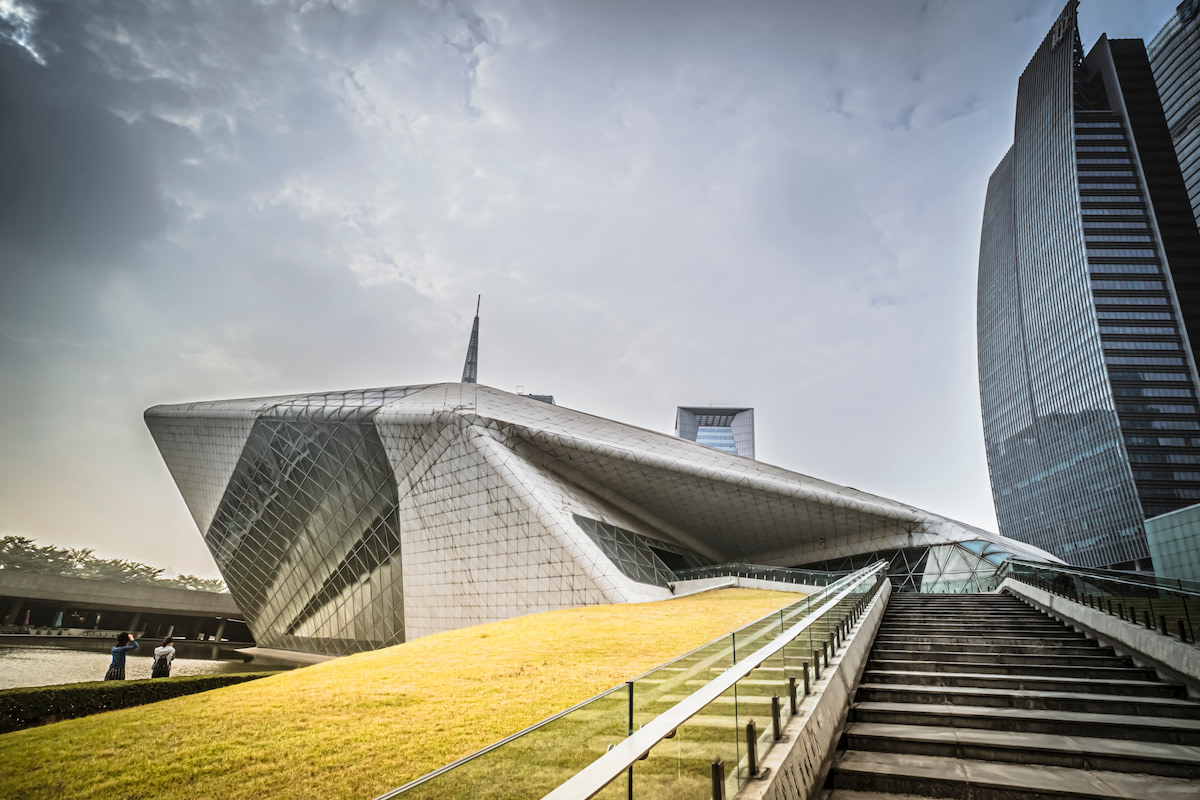Guangzhou Opera House: Key Features by Architect Zaha Hadid
Written by MasterClass
Last updated: Sep 1, 2022 • 2 min read
Designed by architect Zaha Hadid, the Guangzhou Opera House sits beside the Pearl River in Southern China. Boasting multiple lobbies and two auditoriums, the gypsum-centric opera house is one of the premier performing arts venues in the region. Learn more about this stunning building and the project team that brought it to life.
Learn From the Best
What Is the Guangzhou Opera House?
Commissioned by the Guangzhou municipal government, the Guangzhou Opera House is one of China’s premier performing arts venues. Alongside the Shanghai Grand Theatre and Beijing National Centre for the Performing Arts, it’s also one of the largest. You can see it in Zhujiang New Town, a business district within larger Guangzhou.
A Brief History of the Guangzhou Opera House
In 2002, Coop Himmelb(l)au, Rem Koolhaas, and Zaha Hadid competed to design a new opera house for the Guangdong province of China. Hadid won the competition, and her firm (Zaha Hadid Architects) worked alongside other team members, including Jason Guo, Yang Jingwen, and Long Jiang, to design the Guangzhou Opera House.
Project directors Patrik Schumacher and Woody K.T. Yao oversaw the construction of the project alongside project leader Simon Yu. Together, they enlisted the building services of principal contractor Guangzhou Construction Engineering Supervision Co. Ltd. With additional construction management help from China Construction Third Engineering Bureau Co. Ltd., they worked toward erecting the opera house, with the groundbreaking taking place in 2005.
SHTK and Guangzhou Pearl River Foreign Investment Architectural Designing Institute took care of the structural engineering. As for project management, Guangzhou Municipal Construction Group Co. ensured the opera house reached completion on time in 2010.
Guangzhou Opera House: Design Highlights
The Guangzhou Opera House is a striking example of modern architecture. Here are some of the reasons it stands out as a monument to the craft:
- Ample natural light: The project team behind the Guangzhou Opera House wanted to ensure natural light complemented any artificial light inside the building. Beijing Light & View worked with the architectural team to conceive of a lighting design plan capable of delivering this bright appearance via skylights and wide windows.
- Deconstructivist concept: The overall opera house design concept derives from the deconstructivist school of architecture. Deconstructivists do their best to destabilize traditional conceptions of what buildings should look like. They often draw inspiration from more natural landscapes or distinctive geometric shapes. Architect Zaha Hadid hoped to emulate the appearance of two massive boulders rising above the Pearl River with her design.
- Sweeping arches: Arches uphold most of the opera house’s interior, morphing into crossing beams that give the building’s interior a weblike appearance. This sort of facade engineering has as much of a utilitarian purpose as it does an aesthetic one. Structural engineers from the firm KG Engineering ensured the steel frames holding up these artistic arches were stable and safe.
- Twin-boulder appearance: The unique twin-boulder design of the Guangzhou Opera House is perhaps its most notable characteristic. Two main structures rise on the coast of the Pearl River, a mixture of glass, granite, and gypsum, to emulate Hadid’s initial vision of a “double pebble” structure.
- Up-to-date acoustics technology: While the Guangzhou Opera House is an architectural marvel in its own right, it still aptly serves its purpose as a performing arts center. Marshall Day Acoustics ensured both auditoriums contained in the wider structure have top-of-the-line sonic capabilities. These acoustic consultants worked alongside a theater consultant group (ENFI) to make sure everything was as close to perfection as possible.
Learn More
Get the MasterClass Annual Membership for exclusive access to video lessons taught by the world’s best, including Frank Gehry, Will Wright, Annie Leibovitz, Kelly Wearstler, Ron Finley, and more.
